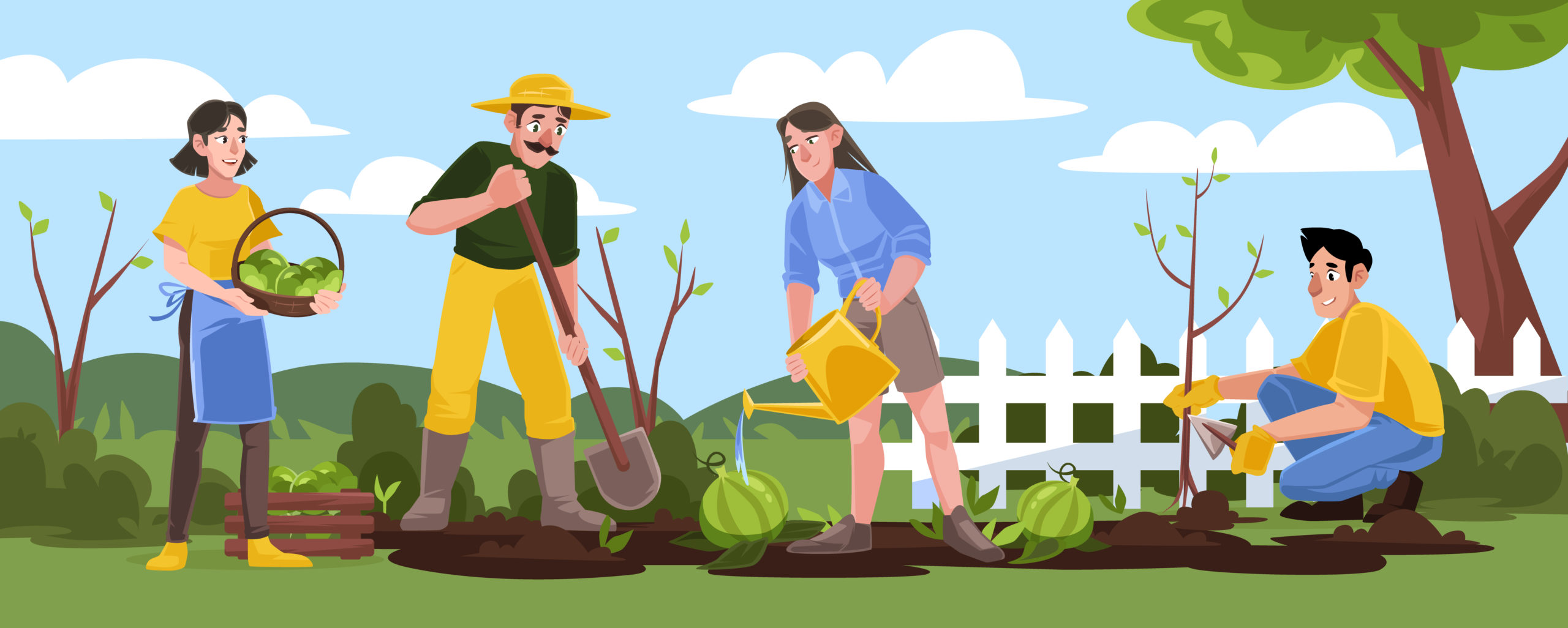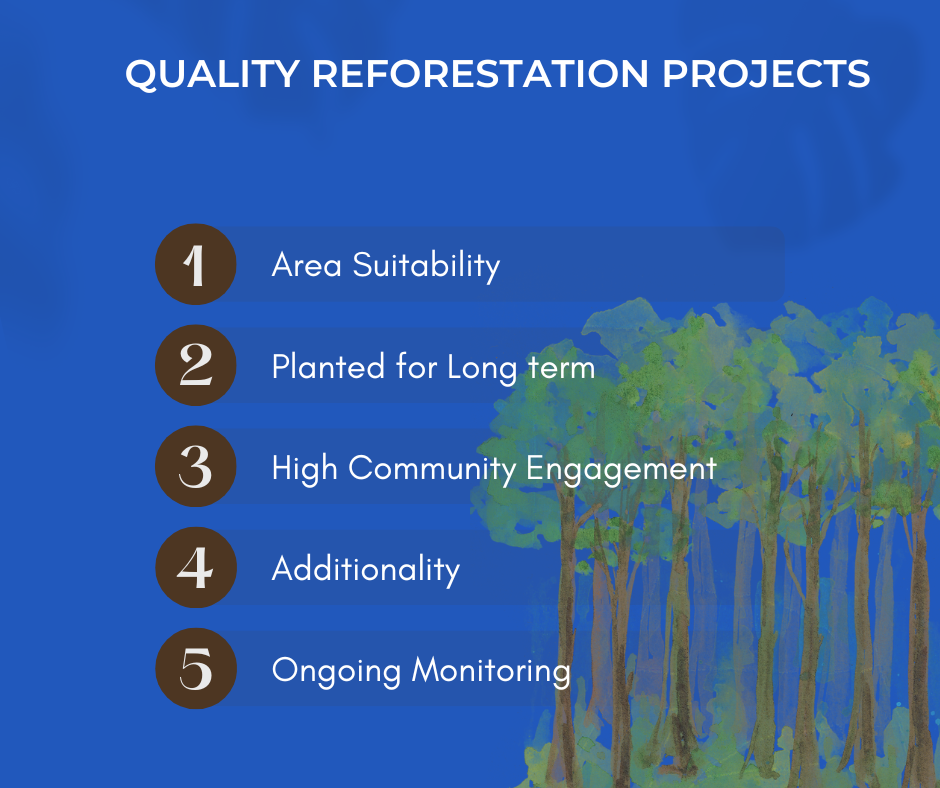Contact: +91 99725 24322 |
Menu
Menu
Quick summary: Explore the comprehensive guide to Afforestation, Reforestation, and Revegetation (ARR) projects. Learn how these initiatives help combat climate change, enhance biodiversity, and restore ecosystems. Join us on a journey to understand and support sustainable environmental practices.

Welcome to the world of Afforestation, Reforestation, and Reforestation Projects (ARR Projects), in a world where protecting the environment is of utmost importance, expanding and restoring wooded areas are effective weapons in our joint struggle against ecological degradation and climate change.
The world’s forests provide one of our largest natural carbon sinks. On average the restoration of trees to degraded land could remove 6-11 GtCO2 /annum.
This blog series aims to provide a profound understanding of afforestation, reforestation, and reforestation, three essential strategies that play a pivotal role in preserving our planet’s biodiversity, mitigating carbon emissions, and nurturing sustainable ecosystems.
From the basics of each approach to in-depth exploration of their real-world applications, this guide serves as your compass for delving into the world of forestry initiatives. Join us on this enlightening journey to comprehend the significance and impact of afforestation, reforestation, and reforestation projects, and discover how they are shaping a greener, more sustainable future for us all.
Afforestation is planting trees in non-forested areas to combat climate change. Reforestation involves replanting trees in previously deforested areas, restoring ecosystems and carbon sequestration. Revegetation restores plant cover, not just trees, in degraded landscapes, preventing soil erosion and aiding ecosystem recovery.
Restoration of the forest and vegetation is essential for a number of reasons.
Carbon sequestration is an essential process in which trees absorb carbon dioxide from the atmosphere through photosynthesis and store it within their woody biomass. Afforestation, reforestation, and revegetation, collectively referred to as ARR, represent potent climate solutions centred around the intentional planting or facilitation of tree and shrub growth.
“Afforestation” pertains to the act of planting trees in areas that have lacked recent tree cover.
“Reforestation” is the practice of planting trees in areas where there was recent tree cover that has been deforested.
“Revegetation” serves as a comprehensive term encompassing the restoration and reestablishment of plant life, as well as the revitalization of soil quality on degraded land.
In the most recent IPCC report, all pathways aiming to limit global warming to 2°C involve the integration of carbon dioxide removal strategies, with approximately 40% of this removal attributed to ARR.
This approach is a tried-and-tested method for carbon dioxide removal and is significantly less experimental compared to many emerging carbon removal technologies.
The procedure of removing and storing carbon dioxide (CO2) from the atmosphere is known as carbon sequestration. Usually, plants accomplish this by photosynthesis and by storing carbon in their leaves, soil, and oceans. It is essential for preventing climate change because it lowers the amount of CO2 in the atmosphere, which lessens its effect on global warming.
The effort to safeguard and effectively manage the diversity of life on Earth, including ecosystems, species, and genetic variation, is known as biodiversity conservation. Ecological balance, ecosystem resilience, and human welfare all depend on it. To secure the survival of various life forms and the benefits they give to the world, conservation techniques include the establishment of protected areas, the fight against habitat destruction, the control of species overexploitation, and the promotion of sustainable practices.
Controlling soil erosion entails employing methods and procedures to stop the loss of topsoil due to wind or water erosion. It entails tactics like no-till farming and the planting of cover crops as well as the construction of terraces, windbreaks, and windbreaks. These techniques support sustainable agriculture by preserving soil fertility, halting land deterioration, and safeguarding the environment.
Protection of a watershed is the management and conservation of an area where all the water drains into one location, such as a lake or river. It entails reducing pollution, preserving vegetation, and implementing land-use techniques that protect both the amount and quality of water, guaranteeing a dependable and healthy water supply for both ecosystems and populated areas.
Attempts to lessen greenhouse gas emissions and their effects on the environment are included in attempts to mitigate climate change. The use of renewable energy sources, increased energy efficiency, reforestation, and the promotion of sustainable practices are some strategies. By taking these steps, we can combat climate change, slow down global warming, and lessen its damaging consequences on ecosystems and human cultures.
Job Creation: Projects that promote job growth, including green energy initiatives, not only lower unemployment but also strengthen regional economies. Communities can immediately benefit from new job opportunities since they can enhance income, raise living standards, and reduce poverty.
Sustainable Livelihoods: Promoting sustainable livelihoods through programs like eco-tourism or sustainable agriculture prevents resource depletion through economic activity. As a result, natural resources are preserved, long-term economic security is provided, and sensitivity to environmental shocks is decreased.
Community Engagement: Participating in decision-making processes, project planning, and execution with local communities develops a sense of empowerment and ownership. Additionally, it may result in the growth of community members’ capabilities and skills, improving their ability to handle problems on their own.
Cultural and Indigenous Aspects: Indigenous and Cultural Aspects: It’s crucial to recognize and preserve the cultural legacy of communities touched by projects. Respecting their cultural beliefs, practices, and knowledge helps to maintain cultural identity and improves communal cohesiveness.
Afforestation, Reforestation, and Revegetation (ARR) initiatives enhance carbon stocks by planting trees or facilitating the natural regrowth of woody biomass. The spectrum of ARR activities is diverse and encompasses practices like agroforestry commercial plantations, farmer-assisted natural regeneration, and even mangrove restoration, which is a form of blue carbon project. While blue carbon projects have gained considerable attention, it’s important to note that not all of them fall under the ARR category; some are classified as REDD+ blue carbon projects.
ARR projects are favored nature-based solutions (NBS) due to their capacity for carbon sequestration, earning them removal credits. Nonetheless, it’s crucial to recognize that the quality of available ARR credits can vary significantly, underscoring the importance of evaluating quality at the project level.
Urban greening initiatives entail bringing plants and greenery into urban settings to improve the quality of life there. These projects include establishing parks, planting trees, and adding green walls and roofs. Numerous advantages of urban greening include better air quality, temperature control, aesthetics, and general well-being for city dwellers.
Initiatives for rural agroforestry include trees and shrubs in farming systems. They offer a variety of advantages, including better soil health, higher crop diversification, and extra sources of revenue for rural areas. Agroforestry practices can improve sustainability by encouraging effective land use, protecting natural resources, and sustaining rural communities’ livelihoods.
The restoration of plant life, particularly native vegetation, in coastal areas and dunes is referred to as coastal revegetation. These initiatives aid in erosion control, coastline stabilization, and storm surge defense. Coastal revegetation programs restore natural vegetation, increase ecosystem resilience, and protect coastal infrastructure and communities from the effects of climate change and sea level rise.

As of April 2022, over 52 million credits have been issued from ARR projects, making up ~3% of the total credits issued to date in the voluntary carbon markets (VCMs). There are ARR projects registered in 49 countries, with ~40% of issued credits coming from South America.
In order to evaluate and manage numerous processes or activities, data collection and monitoring entail the systematic collection of information and ongoing observation. This procedure supports decision-making, monitors development, and upholds accountability. In order to inform improvements, policy changes, and performance evaluation, data is gathered through surveys, sensors, or observations and is then analyzed.
Executing projects or tasks requires rigorous and extremely exact planning and execution methodologies. It entails thorough analysis, effective resource management, and tight adherence to previously established goals and timelines. Precision approaches seek to reduce errors, increase productivity, and guarantee that objectives are achieved with the greatest possible accuracy and efficiency.
Impact assessment is the methodical analysis of how a project, policy, or course of action will affect numerous factors, including the environment, the economy, and societal well-being. It aids in the identification of prospective advantages and disadvantages, enabling the formulation of plans to minimize adverse effects and maximize advantageous outcomes.
The dynamics of the carbon market are evolving. Increasing demand and a diminishing supply of the most affordable carbon credits are likely to spur developers to establish more high-quality projects. Importantly, this shift may encourage buyers to engage in long-term offtake agreements to secure credits, enabling developers to offset the substantial upfront costs associated with genuinely additional ARR projects.
While high-quality ARR projects are in the works, they are expected to come at a considerably higher cost compared to the existing credits available in the market. Moreover, the supply will be limited. Astute buyers, with experience in Verified Carbon Markets (VCMs), foresaw this credit scarcity and have proactively secured their volumes before these credits become available in the general market.
Furthermore, the Science-Based Targets initiative (SBTi) mandates that all offsets must be removal credits. However, given the shortage of high-quality removal credits in the market, buyers face the challenge of fulfilling credible climate commitments with such limited access to top-tier supply.
In conclusion, the world of Afforestation, Reforestation, and Revegetation (ARR) projects is a realm where climate action meets environmental restoration, and where every tree planted represents a step towards a more sustainable future. As we wrap up this guide, we hope it has shed light on the significance of ARR initiatives in sequestering carbon, preserving biodiversity, and revitalizing our ecosystems. These projects are not just about planting trees; they are about investing in the well-being of our planet and the generations to come. Whether you’re a project developer, an environmental enthusiast, or simply someone who cares about our Earth, ARR projects provide a tangible means to make a positive impact.
